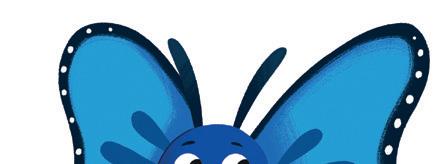






















This Learner’s Book provides activities to support the second term of Mathematics for Cambridge Early Years 3.
Activities can be used at school or at home. Children will need support from an adult. Additional guidance about activities can be found in the For practitioners boxes.
Children will encounter the following characters within this book. You could ask children to point to the characters when they see them on the pages, and say their names.
The Learner’s Book activities support the Teaching Resource activities. The Teaching Resource provides step-by-step coverage of the Cambridge Early Years curriculum and guidance on how the Learner’s Book activities develop the curriculum learning statements.

Hi, my name is Kiho.
Hi, my name is Rafi.
Hi, my name is Mia. Find us on the front covers doing lots of fun activities.

Hi, my name is Gemi.


Making ten
Colour and say.
Try putting counters on the spots first, then colour.
Colour 6 red spots and 4 blue spots.
Colour 2 red spots and 8 blue spots.






Once children have coloured the spots, invite them to say how many spots are in each colour and how many there are altogether. Challenge children to compare their Hungarian ten frames with a partner. How are they the same or different?
Colour and say.
Continue the pattern.

Remember that 12 is equal to 10 and 2 more.
Colour the next step to show 12.














For practitioners








Invite children to say how many cubes are in each column. Children could build their own staircase using coloured cubes. Focus on building a staircase of ten and two more to show how 12 is 10 and 2. Challenge children to continue building a staircase up to 20.

Sort.


Check each shape to see which basket it belongs in.









Give children a set of 3D shapes to explore and sort first. Children then draw lines to sort the shapes into the correct baskets, and discuss if there is a shape which belongs in both baskets (cylinder). Challenge children to name or draw some other objects for each basket.
Colour and say.
Find and colour all the shapes with 4 straight sides in blue. Then move on to the shapes with 1 curved side.















Colour the shapes with 4 straight sides in blue .
Colour the shapes with 1 curved side in yellow .
Encourage children to look at the shapes and count the straight sides on each before colouring them in. Challenge children to name the blue and yellow shapes and the shapes which are not coloured.

